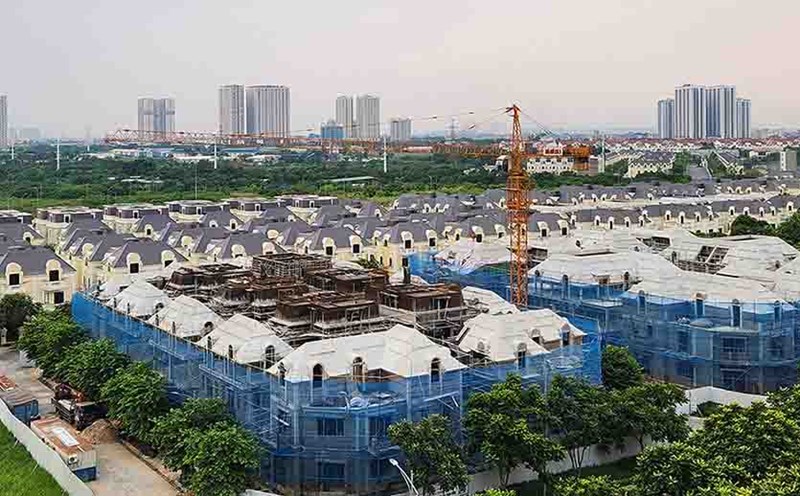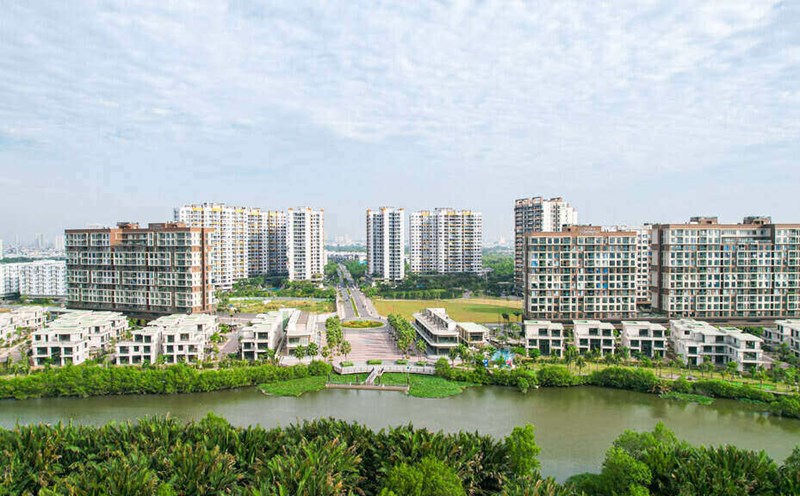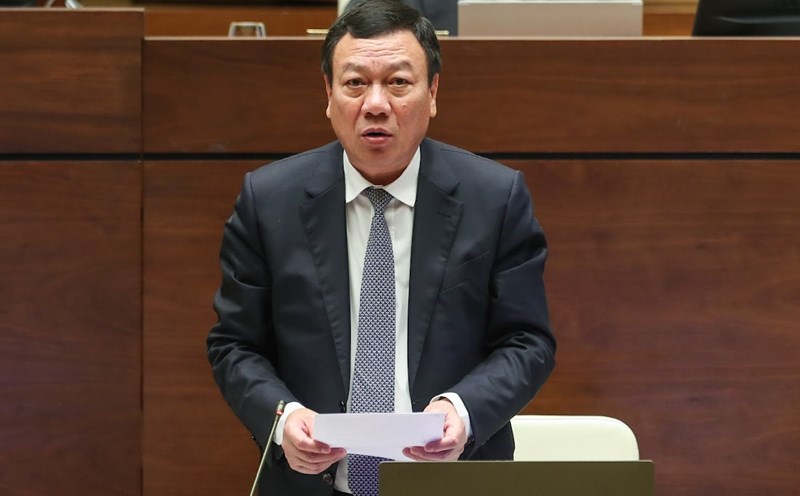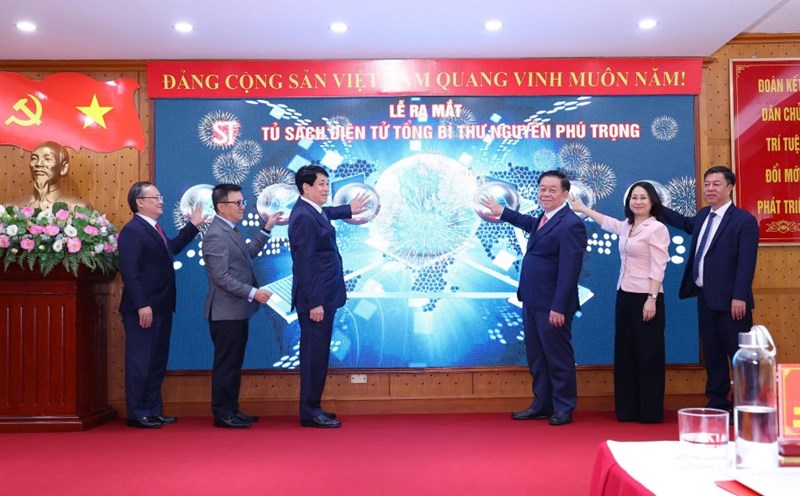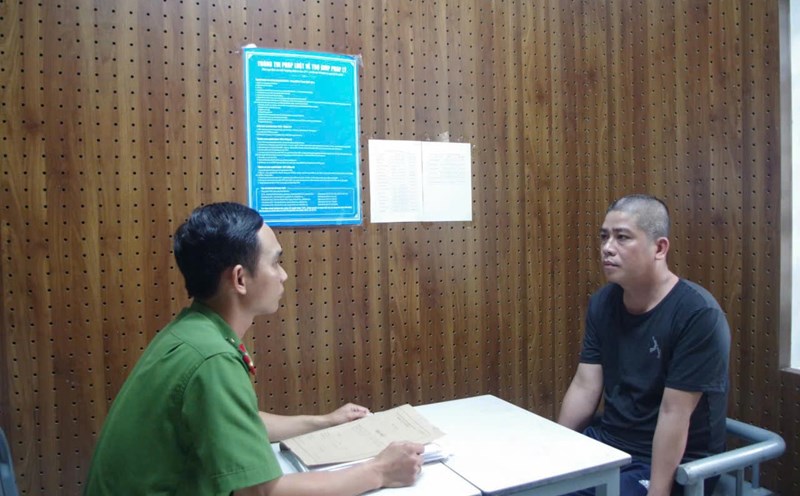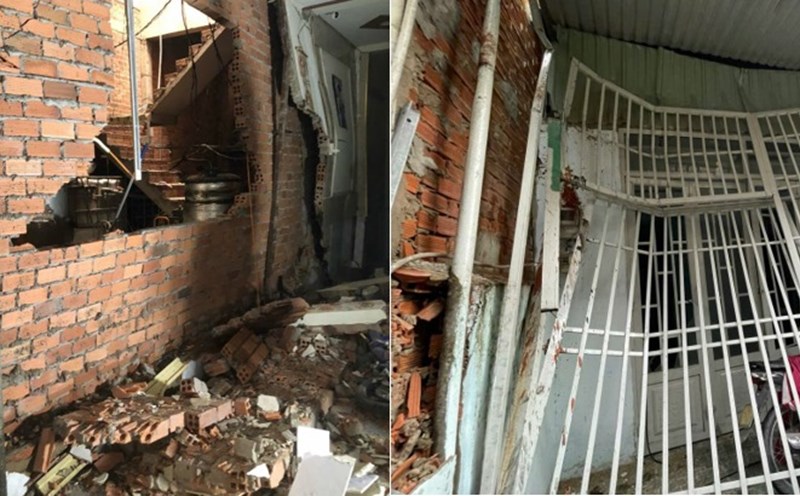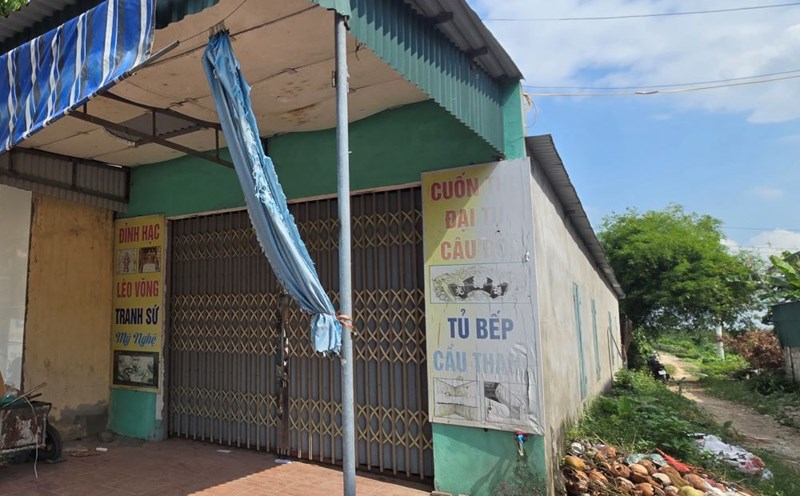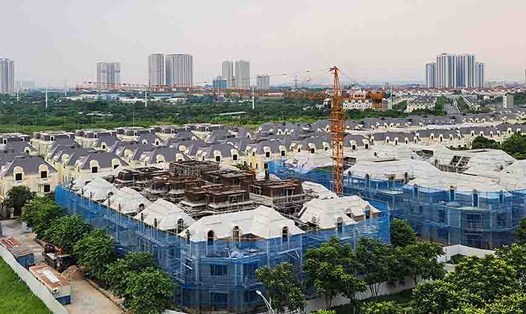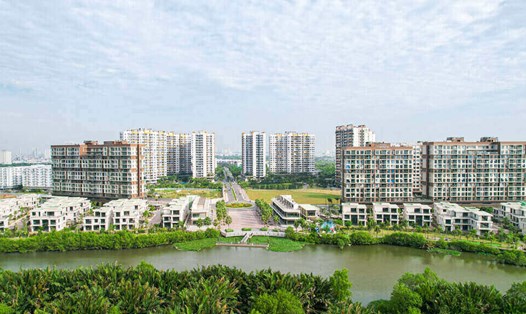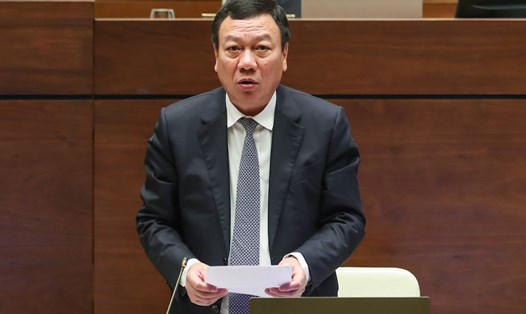Construction began more than 10 years ago and the rough construction has been completed, but many resettlement housing projects in Cau Giay district (Hanoi) with thousands of apartments are still abandoned and gradually deteriorating over time.
Typically, the N01 - C17 resettlement area building located right at the intersection of Tran Thai Tong - Duy Tan, in the middle of a bustling new urban area, is still abandoned and overgrown with weeds. Some items are still unfinished, causing loss of urban beauty and potential safety risks.
According to the Lao Dong reporter's report on September 4, this construction has shown clear signs of deterioration. The walls are covered with moss and mold, and the paint has peeled off. The metal railing system has rusted to some extent, making the scene even more gloomy and ugly.
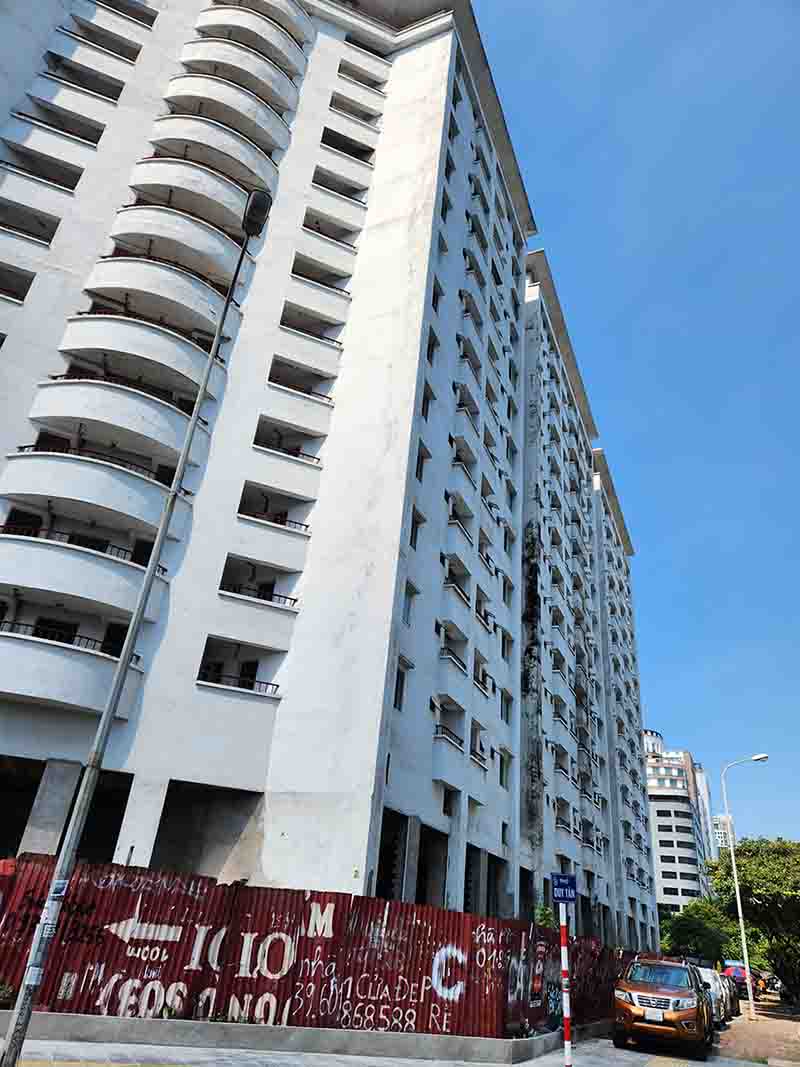
Not far away, the A14 resettlement housing project in Nam Trung Yen Urban Area (Yen Hoa Ward, Cau Giay District) is in the same situation.
Although completed in 2016, after 8 years, the two buildings located right on Mac Thai To Street are still abandoned and unoccupied.
According to the Hanoi Department of Construction, there are 9 resettlement projects with nearly 2,500 apartments in Hanoi. There are 2 projects that have been completed and accepted, have arranged resettlement, but have not been put into use: the resettlement housing construction project at plot NO15,16, Thuong Thanh ward (Long Bien district) and the B, C house construction project in the resettlement area of Tran Phu ward (Hoang Mai district).
The remaining projects such as: The resettlement housing project for resettled people with site clearance (GPMB) at land plot CT4 of Phu Dien concentrated resettlement area (Bac Tu Liem district); the GPMB housing construction project at house N01, land plot C17 in Cau Giay new urban area..., have been arranged by Hanoi City to serve projects requiring GPMB in the city.
Deputy Director of the Hanoi Department of Construction Mac Dinh Minh said that the process of putting resettlement houses into use is facing difficulties. For example, they were designed and constructed according to previous regulations and standards, but now due to changes in fire prevention and fighting regulations, they are not qualified for acceptance.
In addition, some projects previously decided to be used as quarantine, admission and treatment facilities for COVID-19 patients, the investor has completed the construction items to serve the epidemic prevention work and handed them over to the Capital Command.
Up to now, it has not been handed over to the investor to continue completing the remaining items, accepting the conditions to put into use to arrange for resettlement households according to regulations.
In the coming time, the Department will coordinate with departments, branches, People's Committees of districts where there are resettlement projects, review and assess the demand for resettlement housing, advise and report to the Hanoi People's Committee according to current legal regulations.
After arranging resettlement for households whose land is recovered and there is still (surplus) land, propose a plan to organize an auction to recover capital.
Some opinions say that the surplus resettlement housing fund can be sold to low-income people to stabilize their lives, eliminate slums, and old, dilapidated collective houses.

